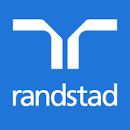
Randstad NA AI Engineer Case: Human-Forward Talent Matching, Fairness, and MLOps at Scale
You will tackle a realistic Randstad North America case focused on building an AI-driven talent-matching and recommendations capability used by recruiters and RPO/MSP client teams. The case mirrors Randstad’s human-forward, tech-and-touch culture: automation that augments recruiters, rigorous fairness and compliance, and measurable impact on client outcomes. Scenario: Design an end-to-end system that ranks candidates for open requisitions and proactively surfaces matches across a multi-tenant client environment. The solution must integrate with ATS/CRM data, support recruiter-in-the-loop feedback, and provide auditable, explainable outputs for clients and compliance stakeholders. What you’ll cover: - Problem framing and KPIs: define success using staffing metrics (e.g., time-to-submit, time-to-fill, submittal-to-hire ratio, recruiter productivity, candidate NPS/experience). Clarify trade-offs between precision/recall, coverage across requisitions, and operational constraints for client programs. - Data and features: résumés, job descriptions, skills taxonomies, historical placements, recruiter interactions/notes, and clickstream. Discuss PII handling, consent, retention windows, de-duplication, multilingual support, and tenant isolation for client data. - Modeling approach: text/skills embeddings (bi-encoder or cross-encoder) for candidate–job relevance, learning-to-rank re-ranker, skills inference/normalization, and a feedback loop that learns from recruiter actions. Address cold-start for new roles/candidates and sparse domains (e.g., life sciences vs. logistics). - Fairness, compliance, and explainability: design guardrails to mitigate bias (avoid direct/indirect use of protected attributes), define fairness metrics and periodic audits, provide recruiter-facing rationales (feature attributions, counterfactuals), and maintain compliance logs suitable for EEOC/OFCCP and privacy regimes (e.g., GDPR/CCPA). Include an appeals/correction mechanism for candidates. - Experimentation and measurement: offline ranking metrics (NDCG@k, MRR), online A/B with guardrails (candidate diversity in slates, rejection reasons quality), and success criteria tied to client SLAs. Propose a staged rollout plan (pilot recruiters → program-level). - Systems design and MLOps: streaming/batch ingestion, feature store, training pipelines, real-time retrieval + re-ranking, caching, and feedback capture. Define monitoring for drift, bias drift, data quality, and model performance; rollback procedures; and cost/performance targets suitable for recruiter workflows (e.g., p95 latency under a few hundred ms for typical slate sizes). - Human-forward adoption: outline recruiter workflows, change management, enablement, and how the system preserves recruiter judgment while scaling best practices across programs. Interview flow (case format): - 10 min: brief + requirements and stakeholder probing (recruiter lead, client program manager, compliance partner). - 35 min: solution walk-through (architecture, modeling, fairness/controls, KPIs, trade-offs). - 20 min: deep dive (choose one: fairness audit plan; ranking experimentation plan; inference scaling/costing). - 10 min: executive-style readout tailored to a non-technical client sponsor, with risks/mitigations and next steps. Evaluation rubric (aligned to Randstad style): client-centric problem framing; bias and compliance rigor; clarity and practicality of design; measurable business impact; collaborative, human-forward communication.
75 minutes
Practice with our AI-powered interview system to improve your skills.
About This Interview
Interview Type
PRODUCT SENSE
Difficulty Level
4/5
Interview Tips
• Research the company thoroughly
• Practice common questions
• Prepare your STAR method responses
• Dress appropriately for the role